
To this day, I am shocked at how poorly the Kill Bill movies did with AMPAS. Both pictures conquered precursor support, including Golden Globe, BAFTA, and Guild nominations, but failed to secure a single Oscar nod. I consider this duo to be Quentin Tarantino's magnum opus, so the outrage is particularly intense when it comes to its awards run. It's a couple of perfect movies, from Robert Richardson's cinematography to Sally Menke's immaculate editing. However, no matter how great those elements might be, this is the Almost There series, so our focus today is the work of an actress who is only matched by Samuel L. Jackson when it comes to her ability to embody Tarantino's vision onscreen.
She's Uma Thurman and she's never been better than here, playing Beatrix Kiddo aka The Bride aka Black Mamba aka Mommy…

In good Tarantino fashion, Kill Bill's structure is a byzantine affair, constantly folding in on itself. Similarly, its style is in constant mutation, each chapter shot in radically different ways, going from kung fu movie pastiche to sobering drama. Before we see any of that, though, we start by hearing our protagonist's labored breaths, a death rattle. When an image contextualizes the sound, what we see is a portrait of savage brutality in silvery monochrome. It's Uma Thurman's bloody visage, battered and dying while an offscreen voice pontificates about mercy and masochism. That voice belongs to Bill (aka Snake Charmer) and when her eyes focus on him, they shine with fury and fear. The Bride doesn't want to die and the first words that come out of her mouth are a weak plea, a confirmation that the baby she's carrying belongs to her assailant.
The words have barely left her mouth when Bill shoots her in the head.
The brutality of that moment is so visceral and revulsive that it propels the entire revenge narrative that concerns the rest of the story. After that kind of merciless suffering, it's easy to imagine our blonde anti-hero selling her soul to the Devil in trade for violent retribution. Still, part of what makes Thurman's performance so good is how she never plays The Bride as a soulless killing machine. That becomes evident right from her second scene when she tracks down one of her former colleagues in the Deadly Vipers Squad who was complicit in the murder of her wedding party and unborn child. The search takes her to the suburbs and Thurman's fight with Vivica A. Fox's Vernita (aka Copperhead) is a merry blasphemy against domesticity.
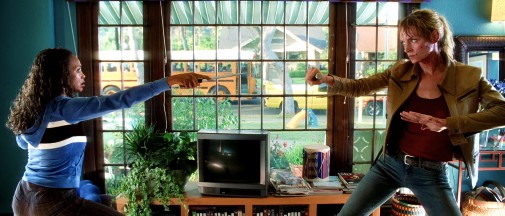
It's spectacular to see The Bride in full-on assassin mode, her body language calling to mind her reptilian codename. Ruthless and tense, she looks like a snake prepared to attack at any moment. However, not everything is mindless violence. Both actresses play their characters as humans and not cartoons. Specifically, they are two women united by motherhood, a theme the films will return to later on. During this early fight scene, this manifests itself in The Bride's compassion. She won't kill Vernita while the other woman's daughter is near. When she is forced to do so, it's not a sense of victory that illuminates The Bride's face, but regret and resignation. She's rueful and sorry for a girl who just lost her mother and had to watch it happen.
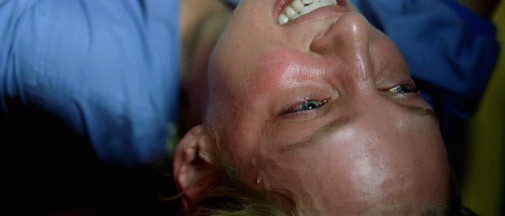
The Bride as a victim and The Bride as a killer are two facets that the film needs to establish before going forward. Once it does that, the narrative leaps back to her awakening from a four-year coma, allowing Uma Thurman to showcase her talents. First, she illustrates the shock upon finding herself alive, the horror at realizing she lost her unborn child and then we get to gawk at her discombobulated physicality as she kills and crawls her way to freedom. Tarantino concedes entire scenes to Thurman, observing her maneuver through difficult situations, letting us see how she thinks and inhabits her own body. In the case of the famous foot-fetish Pussy Wagon scene, the static camera simply observes how Thurman plays a woman willing her limbs out of entropy. "Wiggle your little toe" - it's riveting stuff, truly.
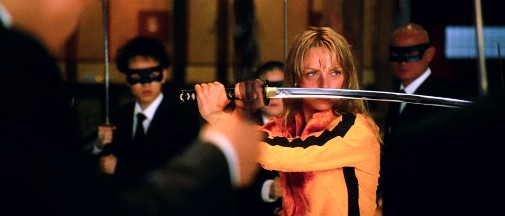
Still, on the matter of Kill Bill: Volume 1, it's important to note how the actress plays her many action scenes. The entire act set in the House of Blue Leaves is particularly good, demanding that the actress goes through a rainbow of emotional variations while also doing incredible fight choreography. Thurman always runs away from robotic bi-dimensionality, showing that The Bride can be scared of her enemies and respectful of them too. Hell, she even gets to add some humor to the proceedings and genuine sorrow when the death of Lucy Liu's O-Ren Ishii (aka Cottonmouth) approaches, at last. This same approach repeats itself in each instance she fights or kills, but the emotional variations are everchanging.
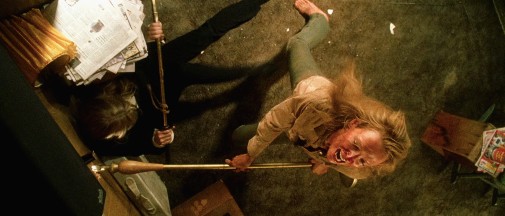
The only time when the actress gives in to one single tone is during her fight with Darryl Hanna's Elle Driver (aka California Rattlesnake) in Volume 2. Then, Thurman leaves any sort of sentimental undercurrent at the door and lets herself be flooded by all-consuming contempt. It's only appropriate since her scene partner does the same. The opposite of that acting dynamic is the prolonged sequences Thurman shares with David Carradine as the eponymous Bill. In those moments, the actress abandons the stylization she brings to the more poppy violent parts of Kill Bill and embraces a surprisingly lived-in naturalism.
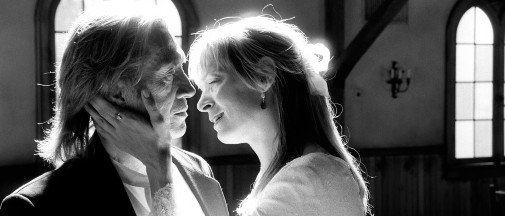
In the black-and-white flashback to the day of the wedding massacre, the actress paints a lifetime with Bill using just a couple of gestures. Her smile and relaxed posture speak for their shared love, but there's also petrifying terror when she witnesses Bill's antagonism towards her groom. In an instant, she realizes what's about to happen and her following interactions with the Snake Charmer are the desperate placations of an abuse victim trying to appease their abuser with performative trust. Better yet are her latter and final interaction with Bill, a final act shot through with a sort of painful humanity that's rare in Tarantino's oeuvre. There's one astounding reaction shot when Thurman takes the plasticity of her expression to awesome limits, going through a storm of shock, relief, joy, terror, and fury in less than a minute.
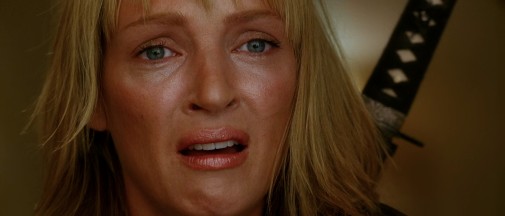
This is already the longest piece in the Almost There series, so we should probably conclude it. Awards-wise, Uma Thurman received plenty of accolades for her miraculous work, including two back-to-back Golden Globe nominations for Best Actress in a Drama. While it's easy to see why she failed to make the Oscar line-up in 2004, since that collection of five appeared to be set in stone very early on in the season, the same can't be said for her 2003 snub. That was a race famous for its unpredictability outside of the two frontrunners and it ended with two actresses that were campaigned as supporting getting into the Lead Actress category. It's preposterous, but, AMPAS ignored Kill Bill altogether. Quite frankly, that's their loss.
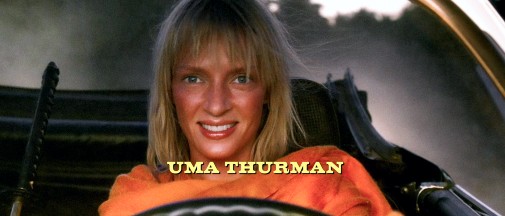
Both Kill Bill movies are new to streaming on Hulu. You can also rent or buy them on Redbox, Amazon, Youtube and others.